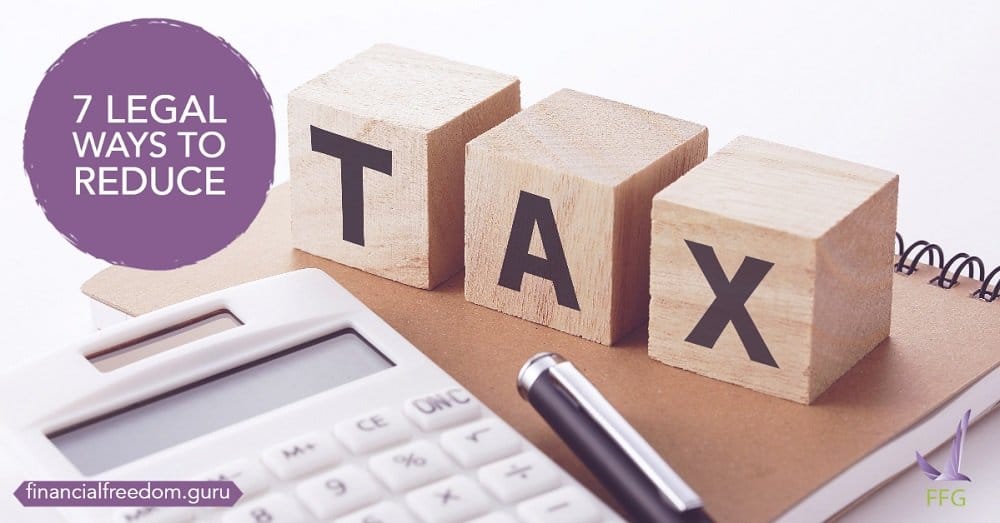2024 Tax Deductions Are Getting Larger: What This Means to You

In 2024, the standard deduction you could claim on your taxes was raised to almost double the past amount. Many American families will see the savings reflected when filing their taxes for 2024. The IRS recently announced the new adjustments for the 2024 tax deduction. There were a few surprises; namely, the standard deduction has been increased again. What do these adjustments mean for you and your money? Below, we explain what you need to know about the standard deduction and the changes for the 2024 tax year.
Table of Contents
Standard Deduction: the Basics
What Is a Tax Deduction?
A tax deduction is one of the ways you can legally reduce how much you owe on your taxes. It’s a tax break that lowers your taxable income (the money you earned against which the government can levy taxes). Your income minus all eligible deductions is called Adjusted Gross Income, or AGI for short.
Simple Example:
- You earned $60,000 in 2018
- Your effective tax rate is 33%
If you don’t claim any deductions, then your tax bill will be $60,000*0.33=$19,800. If you are eligible for the standard deduction of $12,000, then your tax bill will be a bit different: ($60,000-$12,000) *0.33= $15,840.
In some cases, your deduction will lower your effective tax rate as well, since you will be in a lower tax bracket. As you can see, claiming the maximum amount of the deduction that applies to you can save you thousands of dollars on your tax bill.
What Types of Deductions Are Tax?
There are many different types of deductions available and the ones you can claim all depend on how you earn your income. Charitable gifts given, interest from a mortgage or student loan, and certain business costs are all examples of tax deductions. Most deductions must be backed up by evidence to show why you are eligible to receive the tax discount. Receipts from charitable donations or a 1099-INT form showing interest paid may be sent along with your tax forms.
What Is the Standard Deduction?
The standard deduction is different.
- It’s a fixed amount of money that almost everyone can subtract from their taxable income.
- Since most people can select the standard deduction, you don’t need to provide any evidence of eligibility to use it.
- The standard deduction is also unique in that it is tied to inflation; therefore, it is adjusted each year.
What Is 2022 Standard Deduction Amount?
The amount of your standard deduction depends on a few factors: age, income, and filing status. In 2020, the federal filing status was broken into the following buckets:
| If you are… | Your 2022 standard deduction is… |
|---|---|
| Single | $12,950 |
| Married filing separately | $12,950 |
| Married filing jointly | $25,900 |
| Surviving spouse | $25,900 |
| Head of household, as defined by IRS | $19,400 |
| A dependent of someone else, as defined by the IRS | No more than the greater of $1,700 or ($400 + your total earned income) |
The Additions to the Standard Deduction
In some cases, you may be eligible for the additions to your standard deduction.
- If you are blind, over the age of 65, or both, you may claim additional money on standard deductions.
- Older married filers (65 years or older) are eligible for more deductions even if their spouses have passed on.
- Unmarried, married filing separately, or head of household filers older than age 65 can use additional standard deductions.
- States, where residents pay income taxes, may offer a supplemental standard deduction that you can claim on your state taxes.
Should you want to calculate your standard deduction, the IRS has a tool to help you do just that.
Is Everyone Eligible for the Standard Deduction?
Unfortunately, not everyone is eligible to claim the standard deduction. If you cannot use the standard deduction, you must itemize your deductions. Standard deductions cannot be used on your estate, trust, common trust funds, and partnerships. Readers who fall in any of the following categories must itemize their deductions:
- you’ve changed your yearly accounting schedule, and your tax return covers a time of less than 12 months;
- your tax status for any point of the tax year has been a non-resident (Please review IRS guidelines to determine who qualifies as a non-resident alien);
- you and your spouse are married filing separately, and your spouse will be using itemized deductions.
You can choose the standard deduction, or an itemized deduction, but not both within the same year. The standard deduction is a set value, based on your criteria. You identify your filing status and add any additional qualifying deductions, then subtract it from your taxable income. Itemizing deductions involves a manually reviewing all your financials for the tax year, then performing the necessary calculations.
If you’re not sure whether you should claim the standard or itemized deduction, it’s best to compare the numbers. It is conventional advice that you choose the option that gives you the most substantial deduction. Generally, itemizing deductions gives the most benefits to wealthier filers, who may experience reduced benefits with the standard deductions. Standard deductions are a better tool for people who haven’t tracked their expenses over the year. We recommend that you talk to a tax specialist to understand which option is the best for your specific situation.
How Much Your 2024 Standard Deduction Will Be?
Your 2022 standard deduction will apply to all income earned in 2022, which you’ll use it when filing your taxes in 2023. The 2023 standard deduction for each filing status is listed below.
| Filing status | 2023 standard deduction | Increase from 2022 |
|---|---|---|
| Single | $13,850 | $900 |
| Married filing separately | $13,850 | $900 |
| Married filing jointly | $27,700 | $1800 |
| Head of Household | $20,800 | $1400 |
| Qualifying widower/surviving spouse | $25,900 | $800 |
| A dependent of someone else, as defined by the IRS | No more than the greater of $1,100 or ($350 + your total earned income) | $50 |
What Deductions Were Changed for 2024?
With the implementation of the Tax Cut and Jobs Act, several common deductions were purged or modified.
- Personal exemptions were set to zero by the Act.
- The floor on medical and dental deductions was raised from 7.5% of your AGI (Adjusted Gross Income) to 10%. Now, you will only be able to deduct medical and dental expenses beyond 10% of your AGI.
- State and local taxes (SALT) deduction maxes out at $5,000 for single filers and $10,000 for married filing jointly.
- Home mortgage interest can be deducted up to $375,000 (or $750,000 for joint married filers).
- Charitable donations, casualty and theft losses, job-related deductions, and Pease limitations have all been phased out or adjusted.
Even if you’ve itemized your deductions in the past, this doesn’t mean you may do it for your 2023 taxes.
Will You Claim the Standard Deduction in 2022?

It’s very likely that you will use the standard deduction in 2024. In 2021, 70% of all American households used the standard deduction, while the remaining 30% of households itemized. Some households that previously used itemized deductions may consider taking the standard deduction. Attempting to itemize with the higher standard deduction may no longer be as valuable as before.
Could the 2024 Increase in the Standard Deduction Save You Money?
We’re not saying no, but it is unlikely. The 2024 standard deduction increase was done to reflect changes in inflation. Each filing status saw an increase of less than 2%. Your job may increase your income by 2% because your cost of living has grown by 2%. The standard deduction was raised by 2%; the amount of your additional income that is tax-exempt is also 2%. So, your overall financial situation, including your purchasing power, is assumed to be constant.





